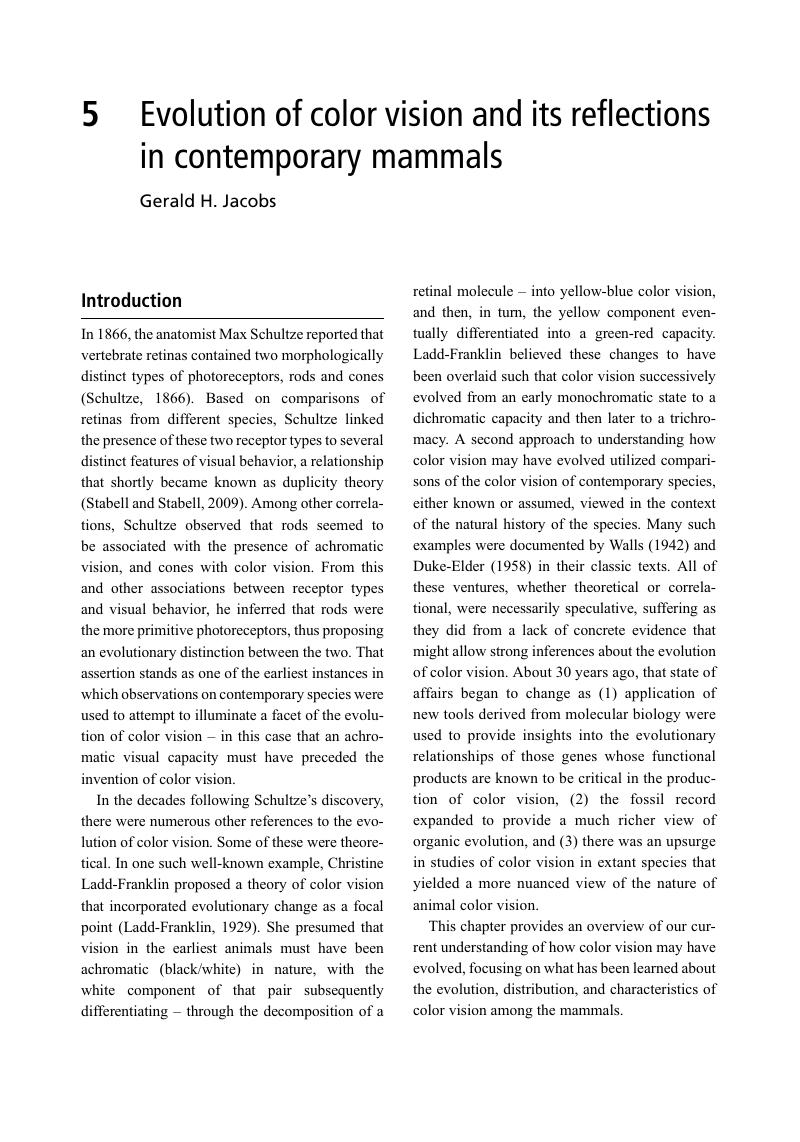Book contents
- Handbook of Color Psychology
- Handbook of Color Psychology
- Copyright page
- Contents
- Figures
- Tables
- Contributors
- Foreword
- Part I Introduction
- Part II Foundations: basics of color science
- 2 Color models and systems
- 3 Fundamentals of color vision I: color processing in the eye
- 4 Fundamentals of color vision II: higher-order color processing
- 5 Evolution of color vision and its reflections in contemporary mammals
- 6 Some philosophical questions about color
- Part III Development of and differences in color vision
- Part IV Color categorization
- Part V Color symbolism and association
- Part VI Color preferences
- Part VII Color effects on psychological and biological functioning
- Part VIII Psychological effects on color perception
- Part IX Color phenomena
- Index
- References
5 - Evolution of color vision and its reflections in contemporary mammals
from Part II - Foundations: basics of color science
Published online by Cambridge University Press: 05 April 2016
- Handbook of Color Psychology
- Handbook of Color Psychology
- Copyright page
- Contents
- Figures
- Tables
- Contributors
- Foreword
- Part I Introduction
- Part II Foundations: basics of color science
- 2 Color models and systems
- 3 Fundamentals of color vision I: color processing in the eye
- 4 Fundamentals of color vision II: higher-order color processing
- 5 Evolution of color vision and its reflections in contemporary mammals
- 6 Some philosophical questions about color
- Part III Development of and differences in color vision
- Part IV Color categorization
- Part V Color symbolism and association
- Part VI Color preferences
- Part VII Color effects on psychological and biological functioning
- Part VIII Psychological effects on color perception
- Part IX Color phenomena
- Index
- References
Summary

- Type
- Chapter
- Information
- Handbook of Color Psychology , pp. 110 - 130Publisher: Cambridge University PressPrint publication year: 2015
References
- 5
- Cited by



